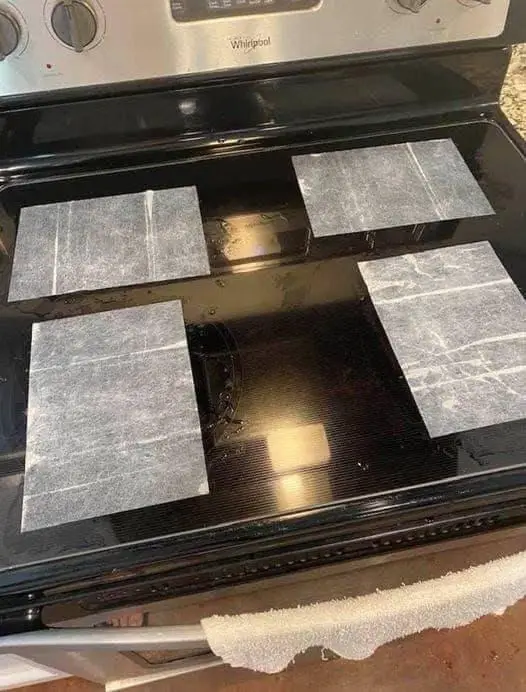A Quick and Easy Way to Make Your Glass Stovetop Shine
Glass stovetops are a sleek and modern addition to any kitchen, but keeping them sparkling clean can sometimes be a challenge. With the right approach, you can maintain that showroom shine without much hassle. This guide will walk you through a quick and easy way to make your glass stovetop shine, using common household items and simple techniques.
Why Clean Your Glass Stovetop Regularly?
Cleaning your glass stovetop regularly is essential for several reasons:
- Aesthetics: A clean stovetop enhances the overall look of your kitchen.
- Functionality: Buildup of grease and grime can affect the efficiency of your stovetop.
- Longevity: Regular maintenance can prolong the life of your stovetop, preventing damage from burnt-on food and stains.
Materials Needed
Before you begin, gather the following materials:
- Baking soda
- White vinegar
- Dish soap
- Water
- A spray bottle
- Microfiber cloth
- Soft sponge or scrub brush
- Razor blade (optional for tough spots)
Step-by-Step Cleaning Process
Step 1: Cool Down the Stovetop
Ensure the stovetop is completely cool before you start cleaning. This will prevent any burns and make the cleaning process more effective.
Step 2: Remove Loose Debris
Use a microfiber cloth to wipe away any loose crumbs, dust, or debris from the surface. This step helps prevent scratching during the cleaning process.
Step 3: Create a Cleaning Solution
In a spray bottle, mix equal parts of white vinegar and water. Add a few drops of dish soap to enhance the cleaning power. Shake the bottle gently to mix the solution.
Step 4: Spray and Soak
Generously spray the cleaning solution onto the stovetop, ensuring all stained and dirty areas are well covered. Let it sit for about 10-15 minutes. The vinegar will help break down grease and grime, while the dish soap loosens any stuck-on food.
Step 5: Apply Baking Soda
After the solution has soaked in, sprinkle a layer of baking soda over the entire stovetop. Baking soda is a gentle abrasive that will help lift stubborn stains without scratching the glass.
Step 6: Scrub the Surface
Using a soft sponge or scrub brush, gently scrub the stovetop in circular motions. Focus on areas with tougher stains, applying a bit more pressure if needed. For particularly stubborn spots, you can use a razor blade held at a 45-degree angle to scrape away the residue carefully.
Step 7: Rinse and Wipe
Once you’ve scrubbed the entire surface, wipe away the baking soda and cleaning solution with a damp microfiber cloth. Rinse the cloth frequently to ensure you’re removing all the residue.
Step 8: Polish with Vinegar
To give your stovetop a streak-free shine, spray it once more with the vinegar and water solution. Wipe it down with a clean, dry microfiber cloth.
Tips for Maintaining a Shiny Glass Stovetop
- Clean Spills Immediately: Try to clean spills as soon as they occur to prevent them from hardening and becoming more difficult to remove.
- Use the Right Tools: Avoid using abrasive cleaners or pads that can scratch the glass. Stick to soft sponges and microfiber cloths.
- Regular Maintenance: Make a habit of wiping down your stovetop after each use to keep it looking pristine.
- Avoid Heavy Pots and Pans: Be careful not to drop heavy cookware on the stovetop, as this can cause cracks or scratches.
Frequently Asked Questions (FAQs)
Q: Can I use commercial glass stovetop cleaners instead of the homemade solution?
A: Yes, commercial cleaners are designed specifically for glass stovetops and can be very effective. Just ensure you follow the manufacturer’s instructions.
Q: How often should I clean my glass stovetop?
A: Ideally, you should wipe down your stovetop after each use and perform a more thorough cleaning weekly, or as needed, depending on how often you cook.
Q: What should I do if I accidentally scratch my glass stovetop?
A: Minor scratches might be buffed out with a glass polish, but deeper scratches may require professional repair. Prevent scratches by using appropriate cleaning tools and avoiding dragging heavy pots across the surface.
Q: Is it safe to use a razor blade on my glass stovetop?
A: Yes, as long as you use it carefully. Hold the blade at a 45-degree angle and gently scrape away stubborn residue. Always use a clean, sharp blade to avoid scratching the glass.
Q: Can I use other types of vinegar instead of white vinegar?
A: White vinegar is preferred because it’s clear and doesn’t leave stains. Using other types of vinegar, like apple cider vinegar, might leave a residue or discoloration on your stovetop.
By following these steps and tips, you can keep your glass stovetop looking brand new with minimal effort. Regular cleaning and proper maintenance will ensure your stovetop remains a beautiful and functional part of your kitchen for years to come.

